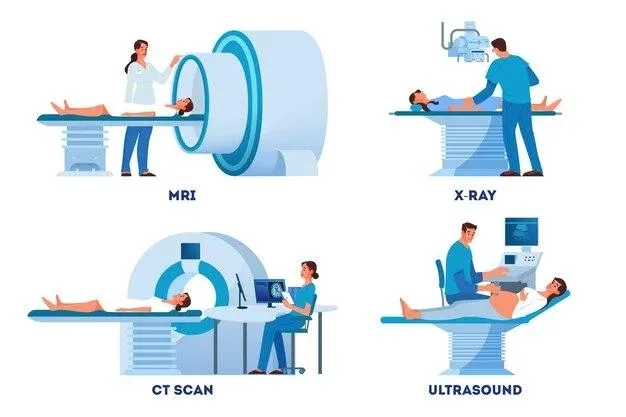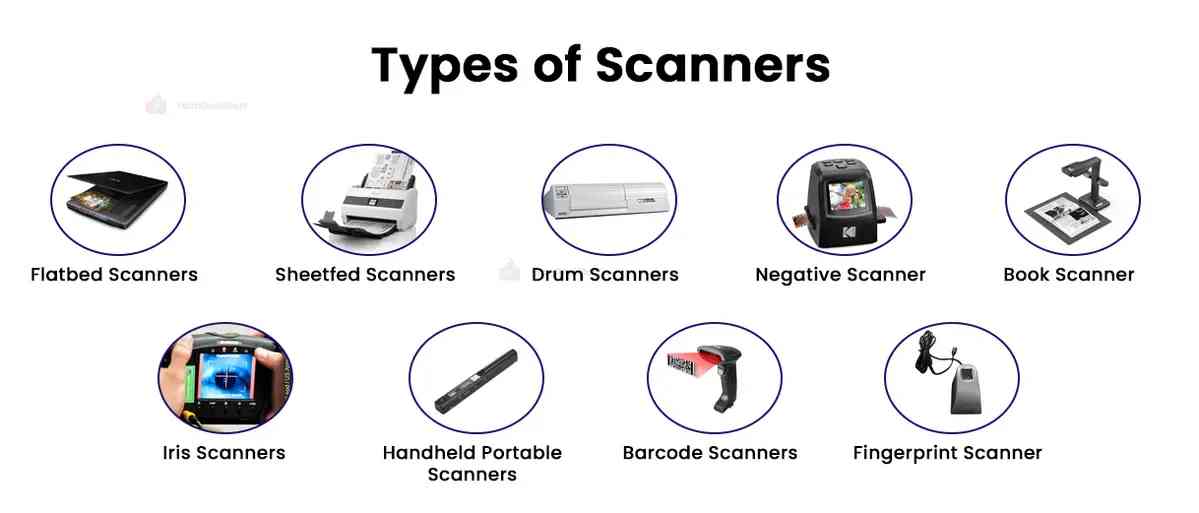Beyond the Surface: The Essential Role of Scanning Machines...!!!
Scanning machines are versatile tools that play a vital role in various industries, from document management and medical diagnostics to security screening and manufacturing. By understanding the different types of scanning machines and their uses, one can appreciate their significance and select the appropriate scanner for specific needs.

Scanning machines are invaluable tools used across various industries to convert physical documents, images, and objects into digital formats. They offer a range of functionalities, from document preservation and data entry to security screening and medical diagnostics.
Types of Scanning Machines
-
Flatbed Scanners:
-
Description: These scanners have a flat glass surface on which documents or photos are placed for scanning.
-
Uses: Ideal for scanning photos, documents, books, and magazines. They offer high resolution and are commonly used in offices, libraries, and homes.
-
Features: Can scan thick and non-standard documents. Often include features like optical character recognition (OCR) for text digitization.
-
-
Sheet-Fed Scanners:
-
Description: Documents are fed into the scanner using an automatic document feeder (ADF).
-
Uses: Suitable for scanning multiple-page documents quickly. Widely used in offices for high-volume scanning tasks.
-
Features: Speed and efficiency in handling large volumes of paper. Often come with duplex scanning capabilities to scan both sides of a document simultaneously.
-
-
Handheld Scanners:
-
Description: Portable scanners that are manually moved over the document or object to capture the image.
-
Uses: Useful for scanning books, magazines, and irregularly shaped items. Popular among students, researchers, and on-the-go professionals.
-
Features: Lightweight and portable. Can scan documents in hard-to-reach places.
-
-
Barcode Scanners:
-
Description: Devices that read and decode barcodes, converting them into digital data.
-
Uses: Widely used in retail, logistics, and warehousing for inventory management, point-of-sale transactions, and tracking shipments.
-
Features: Can be handheld or fixed-mounted. Types include laser scanners, CCD scanners, and imaging scanners.
-
-
3D Scanners:
-
Description: Capture the three-dimensional shape of an object and create a digital model.
-
Uses: Employed in manufacturing, engineering, medical fields, and entertainment for reverse engineering, quality control, and animation.
-
Features: High accuracy and resolution. Techniques include laser scanning, structured light scanning, and photogrammetry.
-
-
Drum Scanners:
-
Description: High-end scanners that use a rotating drum to scan images with exceptional detail.
-
Uses: Preferred for high-resolution scanning of photographs, transparencies, and negatives. Commonly used in professional photo labs and archiving institutions.
-
Features: Superior image quality with high dynamic range and color accuracy.
-
-
Medical Scanners:
-
Description: Include various types such as MRI, CT, PET, and ultrasound scanners.
-
Uses: Essential in medical diagnostics and imaging. They provide detailed images of the body's internal structures to aid in diagnosis and treatment planning.
-
Features: Advanced imaging capabilities. Techniques vary depending on the type of scanner (e.g., magnetic resonance, X-ray, sound waves).
-
-
Security Scanners:
-
Description: Used for security screening at airports, government buildings, and other high-security areas.
-
Uses: Detect prohibited items, weapons, and contraband. Common types include X-ray baggage scanners and full-body scanners.
-
Features: High-resolution imaging to detect objects hidden under clothing or within luggage. Ensures safety and security in public spaces.
-

Uses of Scanning Machines
-
Document Management:
-
Purpose: Scanning machines are crucial for digitizing and managing documents in offices, libraries, and archives.
-
Benefit: Convert physical documents into searchable digital files, improving accessibility and reducing storage space.
-
-
Medical Diagnostics:
-
Purpose: Medical scanners such as MRI, CT, and ultrasound machines provide detailed images of the body's internal structures.
-
Benefit: Essential for diagnosing medical conditions, planning treatments, and monitoring patient progress.
-
-
Security Screening:
-
Purpose: Security scanners are used in airports, government buildings, and other high-security areas to screen luggage, cargo, and individuals.
-
Benefit: Help detect prohibited items, ensuring safety and security.
-
-
Retail and Inventory Management:
-
Purpose: Barcode scanners are widely used in retail and logistics for inventory management, point-of-sale transactions, and tracking shipments.
-
Benefit: Streamline operations and improve accuracy.
-
-
Manufacturing and Engineering:
-
Purpose: 3D scanners are employed in manufacturing and engineering for reverse engineering, quality control, and design.
-
Benefit: Create accurate digital models of physical objects, facilitating product development and innovation.
-
-
Preservation and Archiving:
-
Purpose: Scanning machines are used in libraries, museums, and archives to preserve historical documents, photographs, and artifacts.
-
Benefit: Digitizing these items helps protect them from damage and makes them accessible to a wider audience.
-
-
Graphic Design and Printing:
-
Purpose: High-resolution scanners, such as flatbed and drum scanners, are used in graphic design and printing to capture detailed images for reproduction.
-
Benefit: Ensure color accuracy and image quality.
-
-
Research and Education:
-
Purpose: Handheld scanners are popular among students and researchers for scanning books, magazines, and research papers.
-
Benefit: Provide a convenient way to capture and digitize information on the go.
-
Scanning machines are versatile tools that play a vital role in various industries, from document management and medical diagnostics to security screening and manufacturing. By understanding the different types of scanning machines and their uses, one can appreciate their significance and select the appropriate scanner for specific needs.
What's Your Reaction?

















